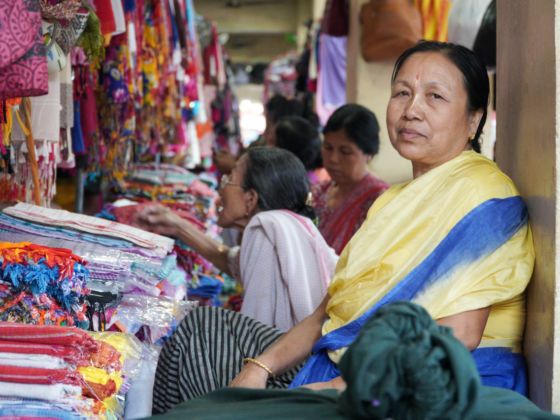We’re accustomed to hearing about centuries-old traditions dominated by patriarchal practices, so it’s refreshing to remember one tradition that’s all about women, and has been for nearly 500 years. Ima Keithel, which translates to “mother’s market,” is a market in India entirely managed by women. Located in the city of Imphal, the capital of the Manipur state, Ima Keithel is the largest all-women market in Asia, with around 5,000 women in charge of its various stalls selling textiles, handcrafted items, produce, and pretty much anything else you can imagine. Even though Ima Keithel has been running since the 16th century, it remains to this day the center of socioeconomic activity in Imphal and a unique symbol of female empowerment.


Ima Keithel, India’s All-Female Market, Has Thrived for Nearly 500 Years
The birth of the market
In 1533, the Lallup-Kaba labor system took effect in Manipur, which required male members of the community to either join the army or go cultivate lands far from home. The women remained in the villages and were then forced to look after their own welfare. Without the men, the women of Manipur became self-sufficient, working their own paddy fields and weaving textiles. They sold these goods at improvised markets, the largest of which became Ima Keithel.
Because the market served as the center of the city’s economy, it thrived for over 300 years and gave the women of Imphal a self-sustaining revenue stream that allowed them to be economically independent from men. However, Ima Keithel wasn’t destined to move forward without obstacles.
The “Women’s War”
Lallup-Kaba, which had served as the catalyst for the market’s inception, was abolished in 1892, but it was soon replaced by other forms of forced labor and conscription, which continued to call men away from home. The repeal of Lallup-Kaba wasn’t what threatened Ima Keithel the most — it was rather the restrictive economic reforms imposed by Great Britain, now a colonizing power in India.
The British, who enjoyed complete political control over Manipur, started exporting locally grown rice to other countries, raising taxes on water, and instituting other economically crippling reforms in the late 1800s. In 1939, the women of Ima Keithel decided they would instead fight fiercely against these strict new laws. The Nupi Lan, or Women’s War, was led by the women traders of the market, who organized meetings, rallies, and even blockades to protest the changes in economic policy.
In response, the British waged war against the Ima Keithel, attempting to sell off the market’s buildings. The women successfully defended it, considering it a bastion of their community’s identity. They even went as far as to occupy the Presidential building in Imphal and request an audience with the Maharaja. When the military fired on the protestors, leaving many women wounded, many men in the city were incensed by the violence and inspired to join the women’s cause.
The British government’s war against the women of Ima Keithel largely came to an end when World War II broke out and priorities shifted dramatically.
Ima Keithel today
Today, Ima Keithel is governed by a union of women. The union manages the market and determines its rules and practices. For example, there is a credit system run by the union wherein women traders can borrow money from the union to purchase goods for their stalls on the condition that they pay it back later. The union also upholds the rule that only married women are allowed to trade and run the stands — a tradition that dates back to the 16th century.
The market is divided into four parts. Metals are sold in the southeastern corner, rice traders occupy the northeastern corner, fishmongers dominate the southwestern corner, and paddy is sold in the northwestern corner. Hundreds of years ago, each corner was occupied by women of a different clan, but while the clan system no longer exists, the basic structure of the market remains. The market is split into two sections, one on each side of the road. Vegetables, fruits, fish, and groceries can be found on one side while handmade products and household items are sold on the other.
While the market’s future is relatively bright right now, especially compared to its tenuous outlook during colonial rule, it is still threatened by modernization and industrialization. Most recently, the construction of a supermarket near the site of the market has sparked fears among the women of being displaced by the new complex’s infrastructure. As before, the women are uniting to defend their beloved market and protect not only the stalls themselves but also the history, tradition, and empowerment it represents.